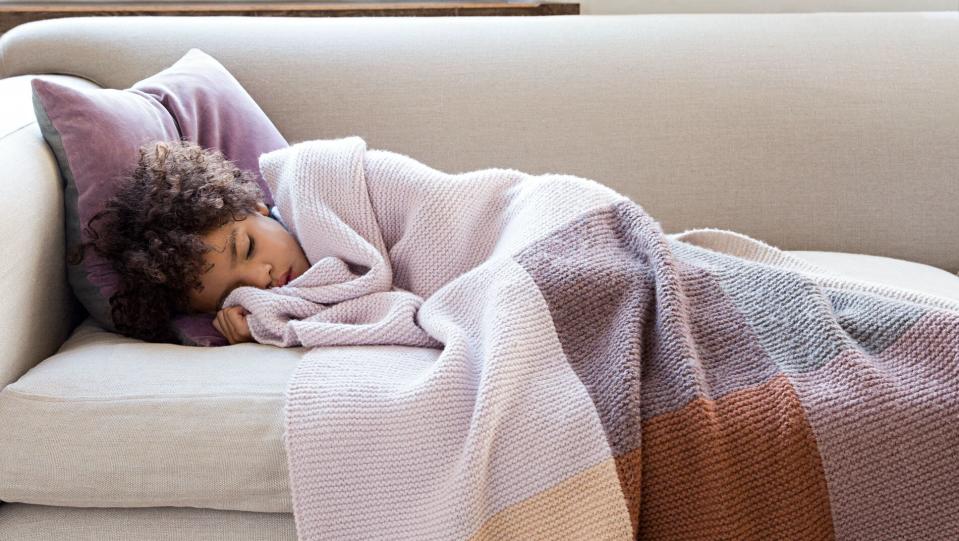What Is the Best Yarn to Use When Making a Blanket?
Dotdash Meredith and Yahoo Inc. may earn commission or revenue on some items through the links below.
One of the best things to do in the cold months of winter is to bundle up in a warm knit blanket that you made yourself. Blankets also make great gifts for everyone on your list, and that's true during the holiday season, for birthdays, or just because. Why? Because everyone needs something warm and cozy at night, especially when the temperatures drop. "Blankets are interesting projects because they bring up a choice for the knitter in choosing warmth or longevity of the blanket as their main concern," explains Carson Demers, a physical therapist who specializes in ergonomics and author of Knitting Comfortably: The Ergonomics of Handknitting. "Some yarns are spun to be lofty (woolen spun) and will trap air better than yarns are not. This will produce warmer blankets."
Related: The Best Yarn Choices for Sensitive Skin

The Morrisons
Fiber Material and Care
Demers says that you will want to consider the size of the blanket and how it will need to be cleaned. "If you plan to toss your blanket into the washer, you'll need either a synthetic yarn (like an acrylic) or a superwash yarn, which is a natural fiber that has been treated to allow washing without shrinking," he says. "If you don't mind hand-washing (and I don't at all) then you can use any fiber."
Woolen spun or lofty yarns are best for warmer blankets. This is because the fibers trap air better and the blanket will be able to hold in heat. For example, Barrett Wool Co.'s Wisconsin Woolen Spun Yarn ($18.50, barrettwoolco.com) comes in a variety of colors that can be used in a warm blanket. The wool-spinning process involves cleaning, carding, and spinning. The carder machine is important because it opens up the fibers and blends them into a soft sheet that looks like a wooly web.
In contrast, worsted-spun yarns such as Brooklyn Tweed's Arbor ($14.50, brooklyntweed.com) are firmer spun. The worsted-spinning process means that the yarn "will last longer because of the spinning technique, are likely to pill less, and be heavier," explains Demers. These yarns may not be as warm as the woolen-spun ones, but they may last longer. Of course, that doesn't mean that a blanket made from worsted yarn won't be warm at all, only that it will not hold in as much heat as woolen-spun yarn.
Ergonomics of Blanket-Making
The type of yarn you choose can also have an effect on your hands. "Ergonomically speaking, untreated (non-superwash) wools offer less work for the knitter's hands than their superwashed counterparts because the process that makes the yarn washable makes them more slippery to work with," explains Demers. "It would be important to spend extra time choosing a needle that compliments the slipperiness of the yarn; for example, a grippier needle."
Demers also recommends using a circular needle for knitting a blanket, or knitting the blanket in sections and seaming them together. "The weight of the blanket should rest on the knitter's lap (or, if you're standing, you can hold it under your arm against your body)," he says. "Single point needles put the weight of the project behind the knitter's hands and make it hard work for the forearm muscles to support it while it's being worked. This can lead to a tendinitis at the elbow."

